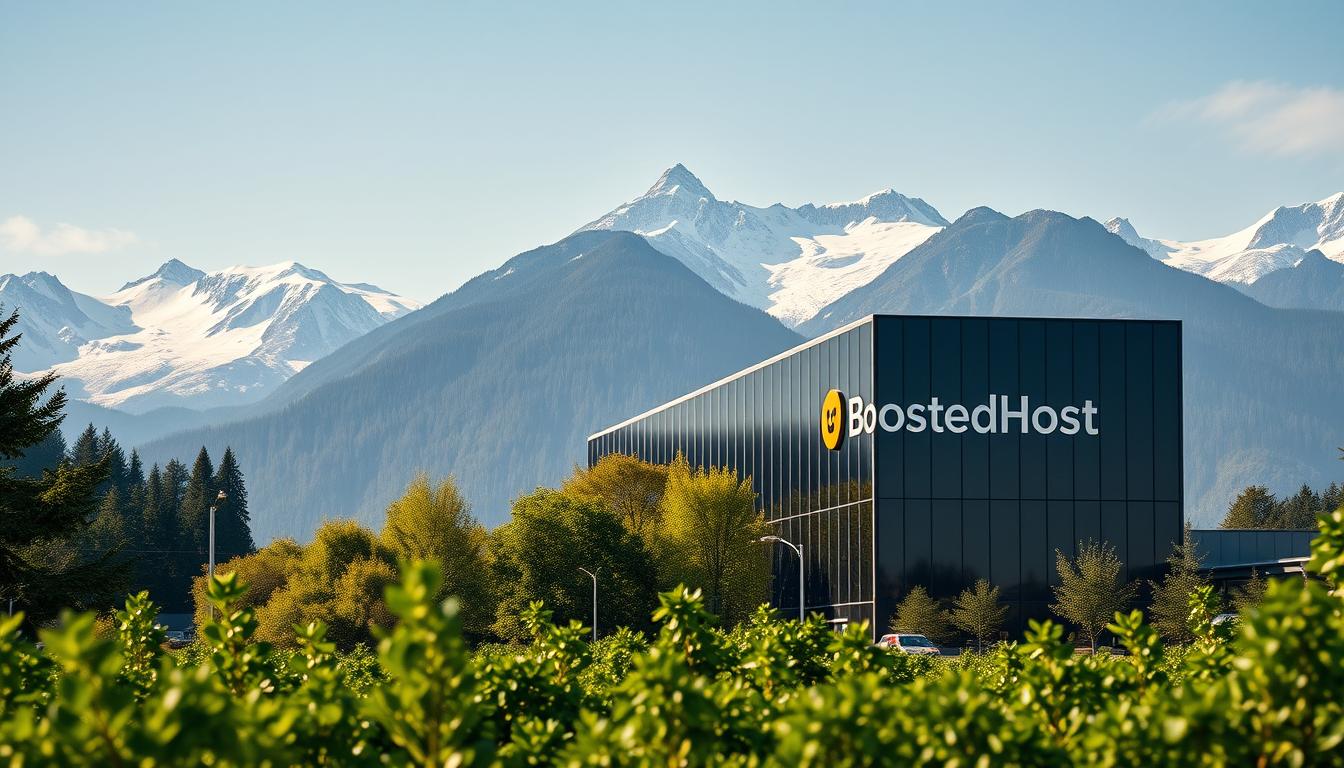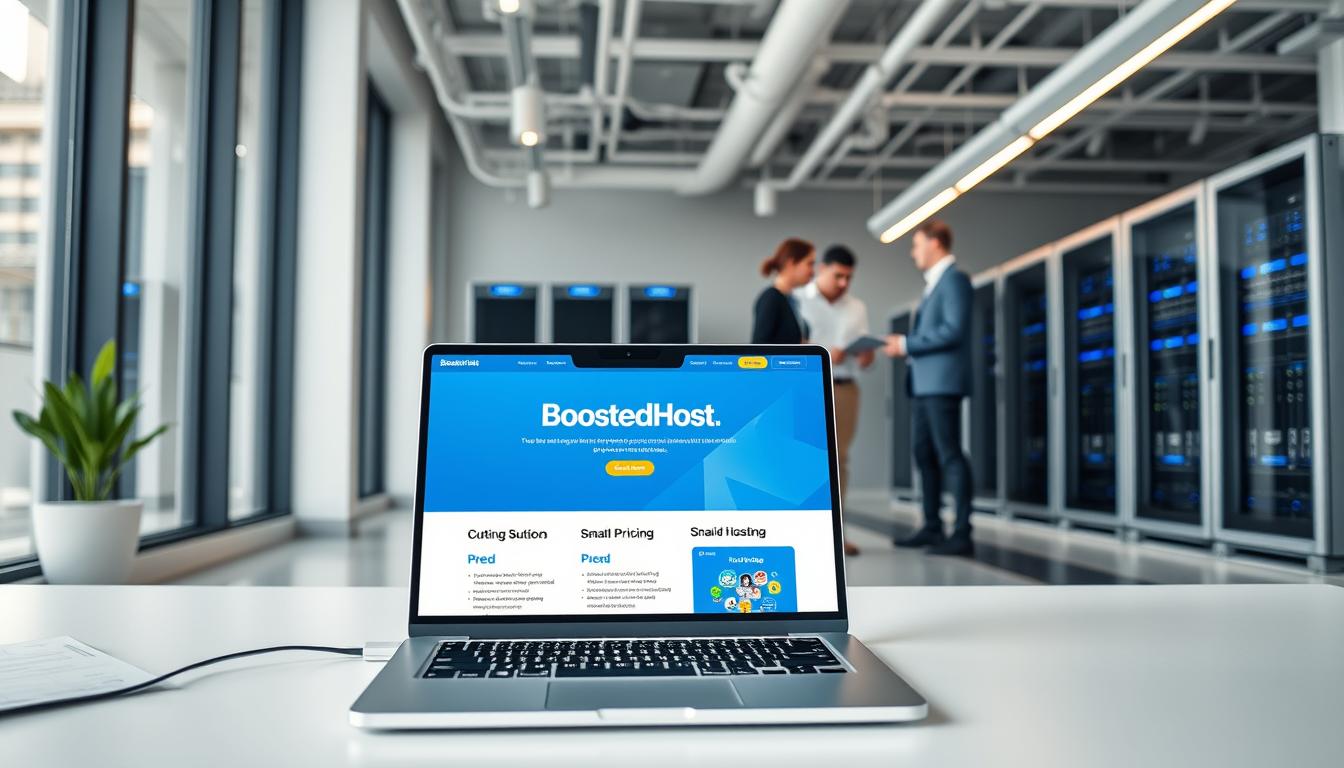We know how it feels to wait for a site to load when a sale is on the line. We’ve sat in your seat—frustrated, patient, decisive. Today we cut through the noise and give clear, practical information that helps you pick the right hosting for your business.
We set the rules: performance, clarity, and support that moves the needle. This comparison examines a Swiss-engineered platform built on LiteSpeed, global CDN, daily backups, free SSL, and fast TTFB against another well-known provider. We focus on real-world uptime, transparent pricing, and support that fixes problems fast.
Our goal is simple. Present the facts, highlight where each service adds value, and show where one company clearly outperforms the other. Expect clear notes on pricing, migrations, developer stack support, and average 99.99% uptime so your expectations match reality.
Key Takeaways
- We compare speed, uptime, price, and support to help you decide quickly.
- One platform uses LiteSpeed, global CDN, and daily backups for faster sites.
- Pricing and renewal transparency keeps total cost predictable.
- 24/7 expert support handles migrations and fixes in minutes.
- Multi-region data centers and modern stacks (PHP, Node.js, Python) aid resilience.
2025 Snapshot: Who’s Faster, Clearer, and More Helpful for U.S. Customers
When U.S. visitors matter, speed and transparency become business decisions. We evaluate real-world performance, plain-English pricing, and support that actually fixes problems.
Commercial intent decoded: picking a host for performance, value, and support
Speed first: Sub-200ms global TTFB on LiteSpeed translates to faster first byte and better Core Web Vitals for American users. That improves conversions and search stability.
Clear price and ownership: Signup and renewal costs are shown side-by-side. No hidden fees—so budgeting and compliance are simple.

Key takeaway at a glance: where each company tends to excel
- We lead in speed, uptime consistency, bundled security, daily backups, CDN, and AI site-building tools.
- Support resolves most tickets in minutes—fast migrations, proactive fixes, and root-cause follow-up with refunds or credits when needed.
- Other providers can be fine for very basic, low-budget web hosting—adequate for small static sites but limited on performance and U.S.-focused clarity.
- Decision in 30 seconds: choose us if you prioritize performance, rapid support, and transparent value.
Short, actionable information for customers who need a reliable, high-performance service in the United States.
BoostedHost vs Simply.com: Core Differences That Matter Right Now
Here’s a clear look at what each company focuses on in 2025.
Performance and predictability drive our roadmap. We build on LiteSpeed, a global CDN, and daily backups to deliver measurable speed and reliability for commercial web projects.
Transparent pricing and renewal terms remove surprise costs. Shared and WordPress plans start from $2.35 up to $7.95, with reseller tiers for agencies.

What each company prioritizes in 2025
- We focus on measurable speed and airtight uptime for business sites.
- Orbit AI helps non-technical customers launch quickly without agencies.
- Global data centers keep performance consistent for U.S. and global audiences.
- Support teams own outcomes—migrations, fixes, and optimizations fast.
- The competitor emphasizes low-cost, entry-level simplicity for budget sites.
| Feature | Our Focus | Competitor Focus | Impact for Customers |
|---|---|---|---|
| Performance | LiteSpeed + CDN, sub-200ms TTFB targets | Basic shared stack | Faster pages and better conversions |
| Pricing | Clear signup/renewal, $2.35–$7.95 range | Lower entry price, fewer included extras | Predictable total cost vs potential upsells |
| Included services | Free SSL, daily backups, malware scans, CDN | Minimal inclusions; affordable base plans | Less admin work and fewer add-on fees |
| Support & Trust | Pro migrations, strict AUP, active security scans | Basic support for simple sites | Faster incident resolution for business sites |
Bottom line: For customers scaling in the U.S., these differences compound into better ROI. We prioritize performance, transparency, and hands-on support. The other company trades features for a lower entry cost and simpler service.
Speed Benchmark Priorities: LiteSpeed, Global CDN, and Real-World TTFB
Speed wins customers; we design our stack to make every millisecond count. Our focus starts at the server layer and moves outward to edge delivery. That creates measurable wins for SEO and conversions.
Ultra-fast LiteSpeed servers and sub-200ms global TTFB claims
LiteSpeed + HTTP/3 reduces CPU per request and cuts round trips. We target sub-200ms TTFB so first paint happens faster. That improves Core Web Vitals and lowers bounce rates.
Global CDN delivery and caching advantages for U.S. visitors
Edge caching shortens the path for U.S. traffic. Static assets and smart object caches serve content from the nearest POP. This stabilizes performance during traffic spikes.
Server-level compression and tuned caching reduce origin load. The result: fewer dropped sessions and better crawl budget use.
Where the competitor may keep up—and where we pull ahead
The competitor can match simple brochure sites on raw load times. But dynamic pages, eCommerce carts, and heavy media need platform-level tuning.
We separate network incidents from true server downtime and publish clear information on incidents. That transparency speeds troubleshooting.
| Priority | What we deliver | Customer benefit |
|---|---|---|
| Server stack | LiteSpeed + HTTP/3 | Lower latency and fewer CPU spikes |
| TTFB target | Sub-200ms global | Faster first paint; better SEO |
| Edge delivery | Global CDN and POPs | Stable U.S. performance under load |
| Incident handling | Clear separation of network vs server issues | Faster fixes and better transparency |
For a practical next step, explore our managed web hosting plans to see how speed-first architecture converts into revenue and lower ad costs.
Uptime and Reliability: Promises, SLAs, and Maintenance Realities
Reliability isn’t a slogan — it’s an engineered outcome we measure every day. We publish clear availability targets and track actual results so you can plan marketing, sales, and technical work with confidence.
Real-world average: Our telemetry shows ~99.99% uptime in practice while the formal SLA aims for 99.9% availability. That difference matters when ad campaigns and checkout flows tolerate only brief interruptions.
What the policy covers and what it excludes
Our terms state a 99.9% website availability goal and 100% public network availability excluding maintenance. Planned work is communicated in advance. Unplanned maintenance happens when we must act fast to protect service integrity.
- Exclusions: force majeure, third-party failures, AUP violations, resource limits, and upgrades.
- Compensation: credits are defined in the terms, but internal records control availability calculations — credits are not automatic.
- Monitoring: internal telemetry and root-cause attribution guide incident reports and fixes.
What you should expect in practice
Maintenance windows run off-peak and we prioritize quick rollbacks. That minimizes downtime and reduces business impact.
“We prefer honesty over marketing myths—clear terms, consistent delivery.”
| Metric | Policy Target | Real-World Average |
|---|---|---|
| Website availability | 99.9% | ~99.99% |
| Public network | 100% (excl. maintenance) | Communicated and tracked |
This information helps set expectations. High uptime stabilizes ad spends, SEO crawling, and checkout reliability. Read the terms closely and compare credits and exclusions before you choose a hosting service.
Pricing Transparency and Total Cost of Ownership
Transparent billing saves time and prevents nasty surprises at renewal. We show sign-up price and renewal cost side-by-side before you buy. That clarity helps teams budget without guesswork.
What you get, no extra fees: free SSL, daily backups (best-effort), malware protection, a global CDN, and scoped migrations at no charge. These inclusions keep your total cost of ownership low.
Clear signup vs. renewal pricing and no hidden fees
Shared and WordPress plans start at $2.35/month and go to $7.95/month. Reseller tiers range from $36.90 to $76.90. Auto-renewal windows and reminders reduce accidental lapses.
What’s included for free
- Security: free SSL and active malware scans.
- Backups: daily snapshots included (best effort).
- Delivery: CDN and performance tools bundled.
- Migration: free within scope — less downtime, less cost.
| Item | Sign-Up | Renewal | Impact |
|---|---|---|---|
| Shared/WordPress | $2.35–$7.95/mo | Shown before purchase | Predictable monthly cost |
| Reseller | $36.90–$76.90/mo | Transparent terms | Scales without margin surprises |
| Domain (.club) | $33.95/yr | Renewal shown in cart | Clear ownership costs |
| Bundled extras | Included | Included | Lower TCO — fewer add-ons |
Bottom line: Predictable pricing and bundled services reduce surprise fees and make forecasting simpler. We provide the information finance teams need to plan for a full year.
Support Responsiveness: Minutes vs. Hours
Fast, expert help changes outcomes when minutes matter. We run a 24/7 engineering desk that resolves most issues in minutes. That speed reduces revenue loss and customer frustration.
24/7 expert help that resolves most requests in minutes
We staff engineers around the clock. They take ownership, diagnose root causes, and deploy fixes immediately. On June 1, 2025 we migrated Dyslexia Daily and repaired broken WordPress components during transfer.
User reviews: fast migrations, proactive fixes, and edge cases
Multiple 2025 reviews praise friendly, competent service and quick resolution times. Our Trust & Safety team handles complex cases directly—no script-reading. We offer refunds or credits when warranted.
Fair note: when competitor support may be sufficient
For very simple sites, competitor support can be adequate. But complex stacks, custom DNS, or legacy CMS issues need specialists. Our team handles edge cases—from ICANN locks to DNS oddities—so customers get practical solutions, not finger-pointing.
“Your business isn’t a ticket number; it’s our responsibility.”
- Proactive communication reduces guesswork during incidents.
- We diagnose, fix, and document root causes—no blame games.
- Faster resolutions mean fewer late-night headaches for teams.
AI Advantage: Orbit Website Builder vs Traditional Setups
You can launch a professional site faster than a single coffee break with Orbit. The builder combines AI layouts, copy suggestions, and hosting so a usable website appears in under five minutes.
Reviews praise a sleek and easy to set up interface. Solo founders, local businesses, and agencies prototyping new ideas benefit the most.
Building a professional site in under 5 minutes—who benefits
Orbit eliminates weeks of setup. AI-driven sections, layouts, and copy accelerate launch and iteration. No code is required.
Why teams pick Orbit:
- Ship fast—professional site in under five minutes.
- Perfect for founders, SMBs, and agencies prototyping quickly.
- Hosting, SSL, daily backups, and CDN are bundled—one service to manage.
- Edit anytime, export content, or migrate to WordPress as needs grow.
“Sleek and easy to set up”—user reviews echo that sentiment.
Compared to traditional builds, Orbit cuts rework and risk. The software reduces plugin babysitting and improves security by default. We pair AI speed with human support for custom tweaks so teams ship faster and convert sooner.
Global Coverage: Data Centers in Switzerland, USA, Europe, and Asia
Geography is a performance decision, not an afterthought. We let you place sites near your buyers to cut latency and improve conversions.
Geographic flexibility for latency-sensitive audiences
Choose Switzerland, the U.S., Europe, or Asia to keep content close to customers. Lower latency helps streaming, gaming, and real-time apps.
Edge caching and regional origins combine to keep load times stable across continents. That reduces load on the origin server and keeps video downloads smooth for children worldwide.
- Redundancy across regions mitigates local network problems.
- Network engineering isolates nameserver hiccups from origin uptime.
- Compliance-friendly options support sensitive sectors and data rules.
- We map traffic to the best region so you scale without re-architecting stacks.
| Capability | What we provide | Customer benefit |
|---|---|---|
| Regional choices | Switzerland, U.S., Europe, Asia | Lower latency for target markets |
| Edge delivery | CDN + regional origins | Consistent load times worldwide |
| Resilience | Multi-region redundancy | Fewer outages, faster recovery |
“Place content near your users — performance and reach without complexity.”
Managed WordPress Hosting: Speed, Security, and Daily Backups
We designed our Managed WordPress service to remove infrastructure work from your to-do list. WordPress on LiteSpeed delivers lower TTFB and faster full-page loads. Reviewers report great server speeds and fast setup.
Daily backups are included on a best-effort basis with at least one full account copy stored off-node. That helps safeguard your content and speeds recovery after mistakes or attacks.
Free migrations move site files, MySQL databases, and email. We handle transfer risk and keep downtime minimal so you can focus on publishing and sales.
- Performance: LiteSpeed + CDN and caching pre-integrated for scale.
- Security: malware protection and automatic patches included.
- Developer tools: staging, PHP versioning, and dev workflows for safe updates.
- Maintenance: we manage platform updates and plugin conflict support.
Our managed approach reduces routine maintenance and improves your day-to-day experience. Launch, harden, and grow without babysitting infrastructure.
“We move sites quickly and protect content so teams can sell more and worry less.”
Explore our Managed WordPress plans and learn more about the service on the dedicated page: Managed WordPress hosting.
Developer Stack and Ecommerce Readiness
We build the stack so developers can focus on shipping features, not firefighting. That starts with clear defaults and predictable capacity for production web apps and stores.
PHP, Node.js, Python, and WooCommerce support
First-class PHP comes with OPcache and LiteSpeed Cache tuned for WordPress and WooCommerce. That reduces TTFB and keeps carts responsive during sales.
We also support Node.js and Python for modern apps and APIs. Developers can run background workers, headless frontends, and server-side logic without hacks.
- Built-in delivery: HTTP/3, Brotli, and CDN integration out of the box.
- Database tuning: Optimized for carts, checkouts, and site search latency.
- Resource isolation: Protects your store during promos and traffic spikes.
Our team diagnoses script-level problems that often mimic hosting faults. We fix root causes—not just restart the server. That reduces repeat incidents and speeds recovery.
Security and compliance matter for merchants. PCI-conscious configurations and a WAF lower risk. Staging environments and rollbacks reduce deployment risk for live stores.
“We tune software and service boundaries so your website stays fast under load.”
| Capability | What we deliver | Benefit |
|---|---|---|
| Language support | PHP, Node.js, Python | Flexible development options |
| Ecommerce | WooCommerce optimized, DB tuning | Reliable carts and faster checkout |
| Operations | Staging, rollbacks, docs | Safer releases and faster onboarding |
Our terms do note expectations on resource utilization. We balance fair usage with capacity planning so heavy workloads get clear guidance and the right plan.
Plans and Pricing: Individuals, Small Businesses, and Agencies
Pricing should help you scale, not surprise you on renewal. We present clear hosting plans and what they include so finance and product teams can decide fast.
Entry-level options: Shared and WordPress plans start at $2.35 per month and go up to $7.95 per month. These packages include core features so you can launch without add-on fees.
Reseller tiers: For agencies and resellers, plans run from $36.90 to $76.90 per month. They scale margins and include staging, priority migrations, and agency workflows.
- Shared and WordPress plans start at $2.35/month with SSL, daily backups, malware protection, and CDN bundled.
- Reseller tiers scale margins without hidden overhead—designed for agencies and white-label services.
- Renewal price is disclosed up front to avoid surprise fees and make annual budgeting simple.
- Month-to-month and annual terms align with runway and cash flow; upgrades are easy as traffic grows.
Domain and extras: Domain .club is $33.95/yr and renewal terms are shown in cart so ownership costs are clear.
“Predictable fees mean fewer finance surprises across the year.”
Transparent value vs upsell traps
We bundle essential services so you don’t chase paid add-ons. That lowers total cost of ownership and keeps your team focused on growth.
Policies, Trust, and Risk Management
Policy clarity removes guesswork — from refunds to abuse handling to scheduled maintenance.
Money-back, acceptable use, and abuse prevention
Our Acceptable Use Policy (AUP) protects honest businesses and platform health. Orders pass security scans to stop fraud and abuse early.
Refunds and money-back handling follow published timelines. Auto-renewal windows and late payment periods are shown before checkout.
Backups, migrations, and the real SLA
Backups run on a best-effort basis with at least one full account backup retained. Free migrations include files, MySQL, and mail; we assist with DNS when domains are hosted here.
The SLA aims for 99.9% website availability. Compensation via credits is managed per the terms — exclusions cover scheduled or emergency maintenance and third-party failures.
- Orders screened by security scans to reduce abuse.
- Clear refund periods and visible fees at purchase.
- Maintenance windows minimized and communicated when possible.
- We act fast on abuse to protect reputations and reliability.
“Readable policies reduce risk and let teams plan with confidence.”
| Item | What we provide | Customer impact |
|---|---|---|
| Backups | Best-effort, one full account copy | Faster recovery after incidents |
| Migrations | Files, DB, mail | Lower migration risk and downtime |
| SLA | 99.9% target, exclusions apply | Predictable expectations, credits per terms |
Real User Experiences: Speed, Support, and Outliers
Real customers tell the clearest stories—what they praise and what trips them up. Our reviews and user experience logs show mostly fast migrations, quick fixes, and clear explanations.
What most customers praise—and the occasional frustration
Most reviews highlight excellent speed, easy setup, and a helpful support team. Dates across 2024–2025 show consistent positive experience.
Examples: June 1, 2025 — Dyslexia Daily migration restored broken WordPress components. July 30 and Aug 9, 2025 — praise for competent, friendly support.
How we respond to complex or policy-related cases
When issues arise we investigate, explain, and offer remedies. A Nov 17, 2024 complaint about 504s led to a diagnosis (malfunctioning script) and a refund plus double credit.
Nov 5, 2024 slowdown was an ISP nameserver node outage — a network reachability issue, not origin downtime. On May 9, 2025 our Trust & Safety team enforced AUP for impersonation of U.S. government entities.
“We answer criticism with specifics, not generic replies.”
| Date | Event | Outcome |
|---|---|---|
| June 1, 2025 | Complex migration (Dyslexia Daily) | Broken WP components fixed; migration completed |
| July 30 & Aug 9, 2025 | Support praise | Fast, friendly resolutions; positive reviews |
| Nov 5, 2024 | ISP nameserver outage | Reachability brief; clarified as network issue |
| Nov 17, 2024 | 504 errors complaint | Diagnosed script issue; refund + double credit offered |
| May 9, 2025 | AUP enforcement | Impersonation case removed; account action taken |
Bottom line: Outliers happen. We document each issue, communicate the facts, and make practical amends so customers get solutions, not platitudes.
Conclusion
We close this comparison with a clear recommendation for buyers who value measurable performance.
Choose reliable hosting services that lower load times and reduce risk. We deliver LiteSpeed + CDN and target sub-200ms TTFB so pages load fast for U.S. customers.
Average ~99.99% uptime and 24/7 expert support mean fewer outages and faster fixes. Orbit AI gets a site live in minutes, and migrations start at $2.35/month for entry plans.
Our terms are transparent and practical. Developers and merchants get the stack they need — scalable, secure, and ready for real traffic.
Next step: pick a plan and let us migrate your site. We partner with you to build a faster, safer, more profitable presence online.
FAQ
Which host offers faster real-world page loads for U.S. visitors?
Real-world speed depends on server stack and CDN. One provider uses LiteSpeed and an optimized global CDN to target sub-200ms TTFB for U.S. visitors. The other keeps competitive performance with solid caching and edge rules. For U.S.-centric sites, pick the host with a nearby data center and a CDN option enabled.
How reliable are uptime guarantees and SLAs in 2025?
Many hosts advertise 99.99% or 99.9% uptime. The difference shows up in SLA credits and exclusions. We recommend reading the terms: scheduled maintenance, DDoS mitigation, and third-party outages are commonly excluded. Choose a provider with transparent incident reports and a clear credit policy.
What should I expect in total cost of ownership beyond the headline price?
Look past introductory rates. Renewal pricing, domain fees, premium backups, malware removal, and priority support can add up. Favor plans that include SSL, daily backups, malware protection, and a CDN without extra charges to reduce long-term costs.
How fast is customer support — minutes or hours?
Response times vary by channel. Top-tier hosts offer 24/7 chat and ticket triage that resolves many requests in minutes. Phone or advanced escalation can take longer. Check independent reviews for typical resolution times and real migration experiences.
Do these hosts support managed WordPress with daily backups and security hardening?
Yes — both offer managed WordPress tiers. The best plans include daily backups, automatic core updates, malware scanning, and performance tuning. Verify backup retention windows and restore procedures before committing.
Can I build a site quickly with an AI website builder or traditional tools?
If you want a rapid, polished site, an AI-driven builder can get you live in minutes with templates and automated copy. Traditional setups (WordPress, headless frameworks) give more control for developers. Choose based on time-to-launch vs. customization needs.
Are there data centers in the U.S. and other regions for low latency?
Both providers maintain multi-region footprints. Look for explicit U.S. locations if your audience is American. Multi-data-center options let you place sites closer to users to lower latency and improve caching efficiency.
Which developer stacks are supported — PHP, Node.js, Python, and e‑commerce platforms?
Modern hosting providers support PHP (multiple versions), Node.js, and Python via app containers or managed runtime. WooCommerce and other e‑commerce platforms are typically supported with optimized resources and caching layers. Confirm specific version support and SSH/CLI access for deployments.
What does a fair money-back or cancellation policy look like?
A clear money-back window (30 days is common) and transparent pro-rata refunds for annual plans are signs of a fair policy. Also check acceptable use policies and abuse handling — rigid or vague terms can cause unexpected suspensions.
How do backups, migrations, and restores actually work?
Reliable hosts offer automated daily backups with easy one-click restores from the control panel. Some include free migration services. Confirm backup retention length, backup storage location, and any fees for restore or out-of-window restores.
How do uptime incidents and scheduled maintenance get communicated?
Quality providers publish status pages and send incident updates via email or SMS. Scheduled maintenance is typically announced in advance. Look for historical incident transparency to judge how promptly the team communicates.
Are there hidden fees or upsell traps to watch for?
Watch for add-on fees: domain renewals, premium DNS, priority support, advanced security scans, and overage charges for bandwidth or CPU. Choose plans with predictable resources and clear overage pricing.
How does a global CDN affect SEO and user experience?
A CDN reduces latency, speeds asset delivery, and improves perceived performance — all positive for SEO and conversion. For U.S. audiences, pick a CDN with strong U.S. POP coverage and good cache hit ratios.
What level of protection is typical for malware and DDoS?
Basic plans include malware scanning and simple protection. Higher tiers add Web Application Firewalls (WAF), advanced malware removal, and DDoS mitigation. Verify response SLAs for security incidents and whether remediation is included.
Can agencies and resellers get white-label or multi-site management features?
Many hosts offer reseller and agency tiers with billing controls, white-label dashboards, and easy site cloning. These reduce management overhead and present a branded experience to clients.
How do renewal prices compare to introductory offers?
Renewal rates are usually higher. Introductory discounts may apply for the first billing period only. Confirm the regular renewal price and any available locking options or multi-year discounts to avoid surprises.
What customer feedback themes should I weigh when choosing a host?
Prioritize consistent praise for uptime, support speed, migration help, and honest billing. Note any recurring complaints about unexplained suspensions, slow ticket responses, or billing disputes — those are risk indicators.
Is it easy to scale from shared to VPS or managed cloud as traffic grows?
Top hosts offer seamless upgrade paths: one-click scaling to VPS or managed cloud with preserved site files and databases. Confirm how IPs, DNS, and SSL certificates are handled during upgrades to avoid downtime.
What monitoring and analytics are provided to track site performance?
Look for integrated uptime monitoring, TTFB metrics, CDN analytics, and resource usage dashboards. These tools help identify bottlenecks before they impact users and guide optimization decisions.
How do refunds or credits work if the SLA is breached?
SLAs usually define credit levels based on downtime thresholds. Credits are often applied to future bills rather than cash refunds. Read the SLA carefully to understand eligibility and the claim process.
For e‑commerce sites, what extra considerations apply?
Prioritize fast checkout performance, PCI compliance, SSL enforcement, regular backups, and robust caching that doesn’t break dynamic cart functions. Also ensure responsive support during peak sales periods.




